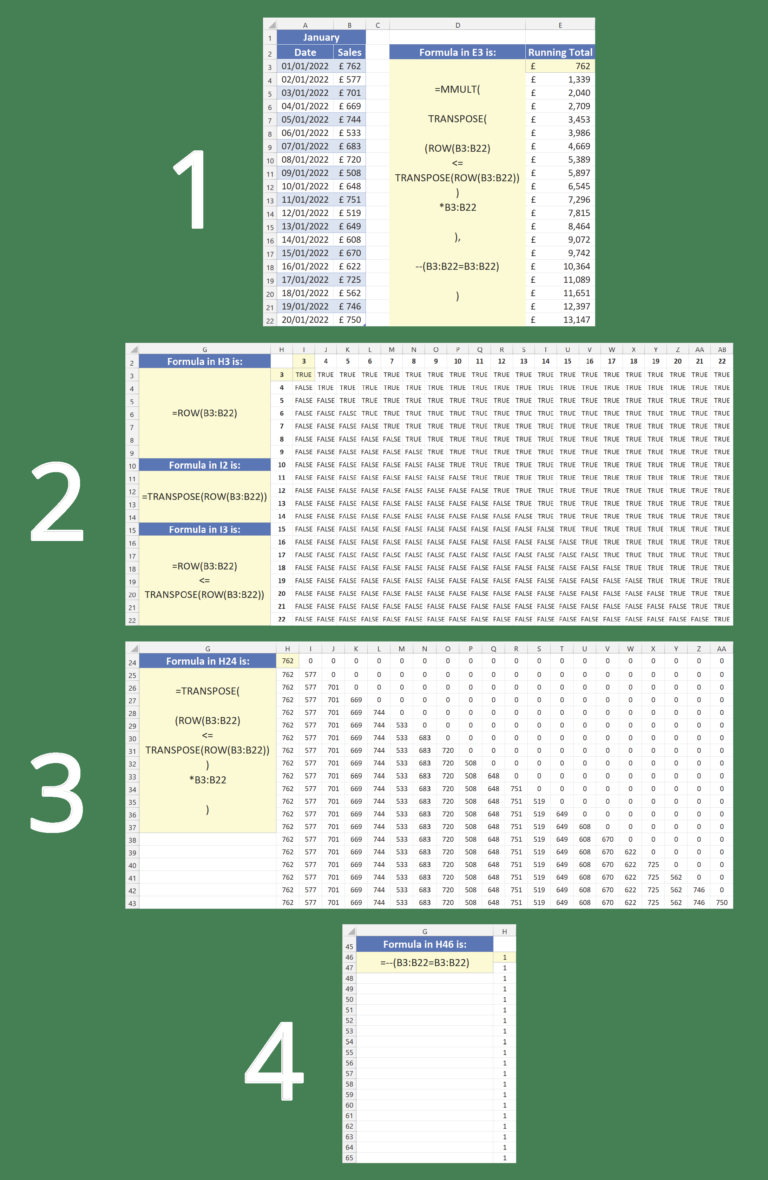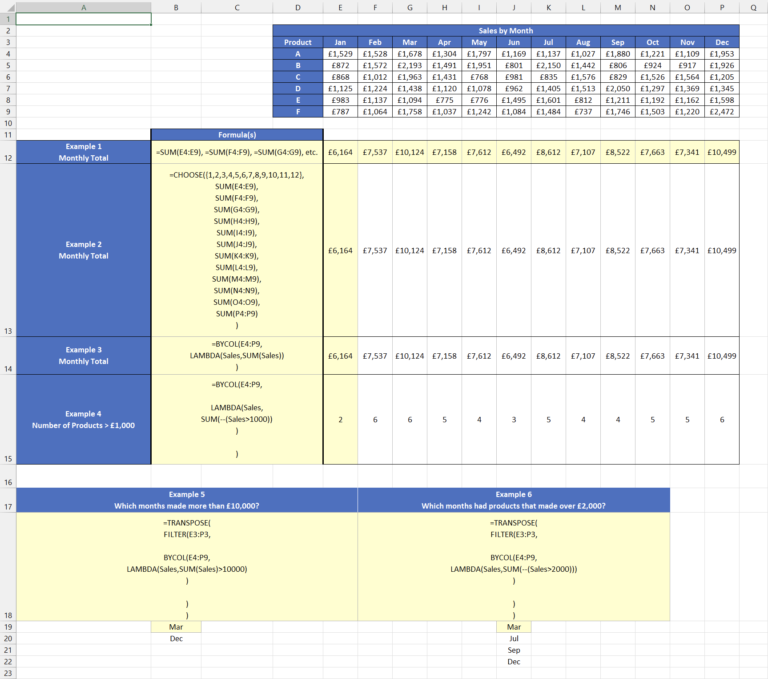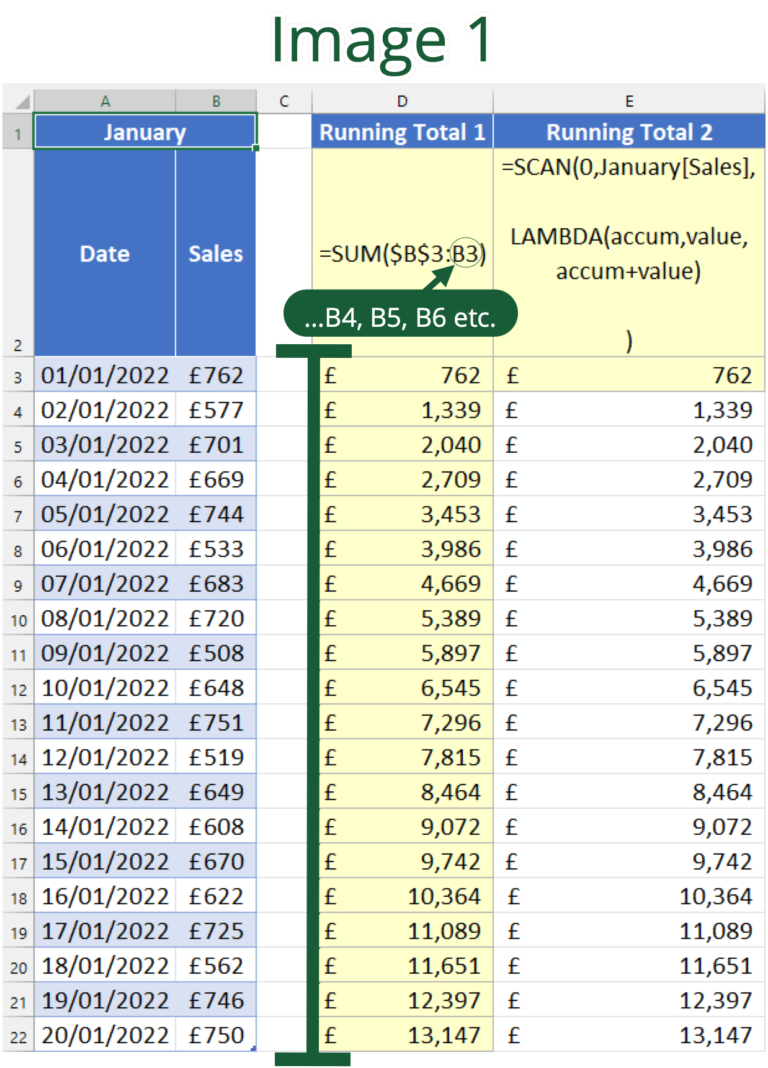MMULT Running Total
Previously, I showed you how to use the SCAN function to calculate the running total with a single formula (). However, given only Office Insiders can access it right now, it’s probably not wise to use it in shared workbooks….

Previously, I showed you how to use the SCAN function to calculate the running total with a single formula (). However, given only Office Insiders can access it right now, it’s probably not wise to use it in shared workbooks….

Excel functions like XLOOKUP and MATCH lack the ability to look up values in multiple rows or columns. However, this problem is circumvented with the help of MMULT, which returns the matrix product of two arrays. Before diving into the…

Yesterday, I covered the new BYCOL function, which allows you to perform calculations on columns in an array. Guess what? There’s also a BYROW function! Predictably, it does the same thing for rows instead. Here’s the syntax: Whereas BYCOL calculated…

The new BYCOL function is currently only available to Office Insiders, but it promises to make calculating columns easier and more efficient. The Sales by Month table contains monthly sales figures for six products. If you wanted to calculate the…

A running total is the summation of the current and previous numbers in a column. It’s a useful way of keeping track of sales figures over a time period or for monitoring the balance on a bank statement. Have a…

Star rating systems are commonly used to rank things like films, TV shows, hotels, and shopping products. Typically, they are done on a scale of 1–5 (or 0–5), although you may have seen the odd six-star hotel or 10-star energy-rated…
End of content
End of content